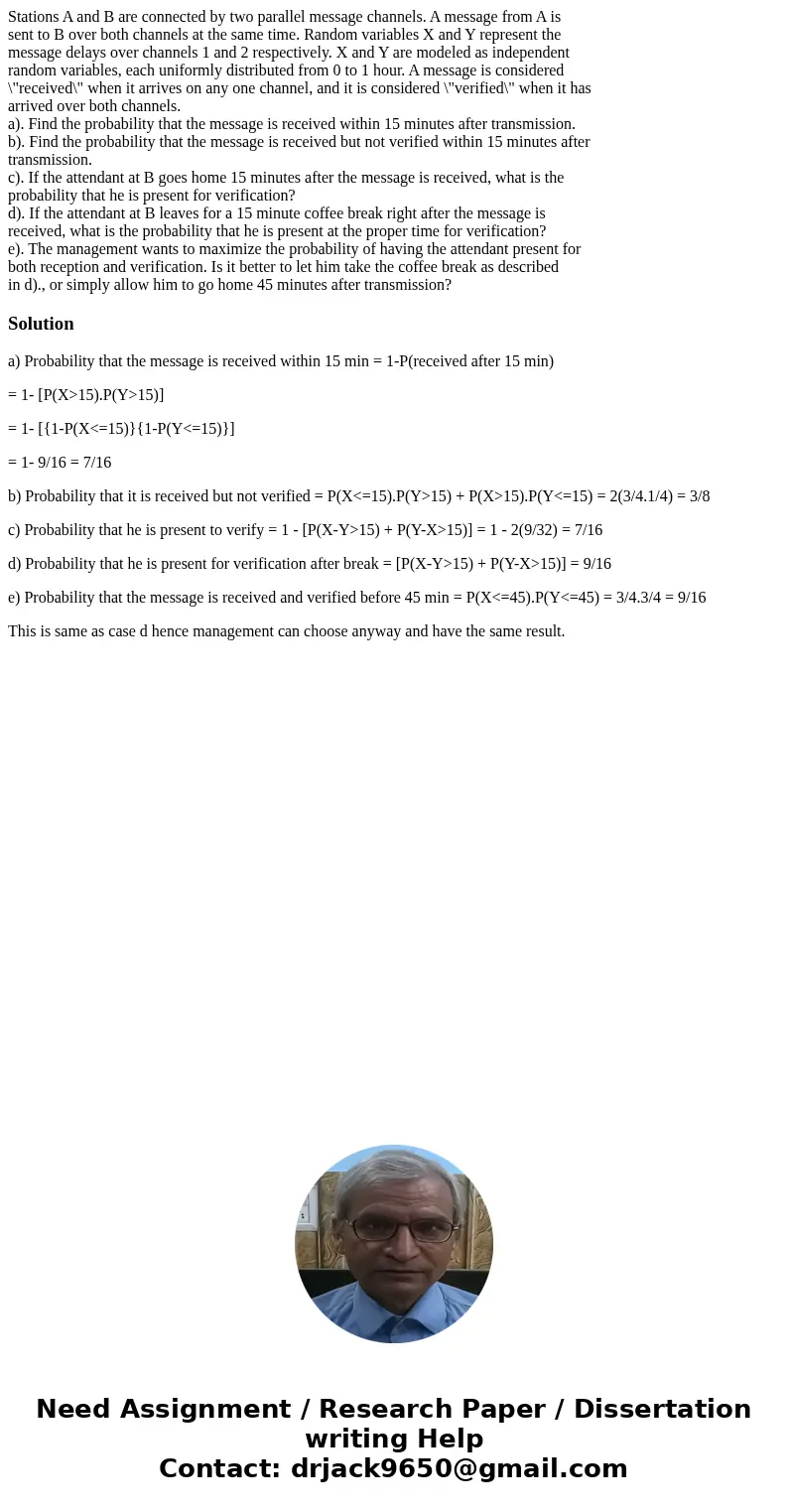Stations A and B are connected by two parallel message chann
Stations A and B are connected by two parallel message channels. A message from A is
sent to B over both channels at the same time. Random variables X and Y represent the
message delays over channels 1 and 2 respectively. X and Y are modeled as independent
random variables, each uniformly distributed from 0 to 1 hour. A message is considered
\"received\" when it arrives on any one channel, and it is considered \"verified\" when it has
arrived over both channels.
a). Find the probability that the message is received within 15 minutes after transmission.
b). Find the probability that the message is received but not verified within 15 minutes after
transmission.
c). If the attendant at B goes home 15 minutes after the message is received, what is the
probability that he is present for verification?
d). If the attendant at B leaves for a 15 minute coffee break right after the message is
received, what is the probability that he is present at the proper time for verification?
e). The management wants to maximize the probability of having the attendant present for
both reception and verification. Is it better to let him take the coffee break as described
in d)., or simply allow him to go home 45 minutes after transmission?
Solution
a) Probability that the message is received within 15 min = 1-P(received after 15 min)
= 1- [P(X>15).P(Y>15)]
= 1- [{1-P(X<=15)}{1-P(Y<=15)}]
= 1- 9/16 = 7/16
b) Probability that it is received but not verified = P(X<=15).P(Y>15) + P(X>15).P(Y<=15) = 2(3/4.1/4) = 3/8
c) Probability that he is present to verify = 1 - [P(X-Y>15) + P(Y-X>15)] = 1 - 2(9/32) = 7/16
d) Probability that he is present for verification after break = [P(X-Y>15) + P(Y-X>15)] = 9/16
e) Probability that the message is received and verified before 45 min = P(X<=45).P(Y<=45) = 3/4.3/4 = 9/16
This is same as case d hence management can choose anyway and have the same result.

 Homework Sourse
Homework Sourse